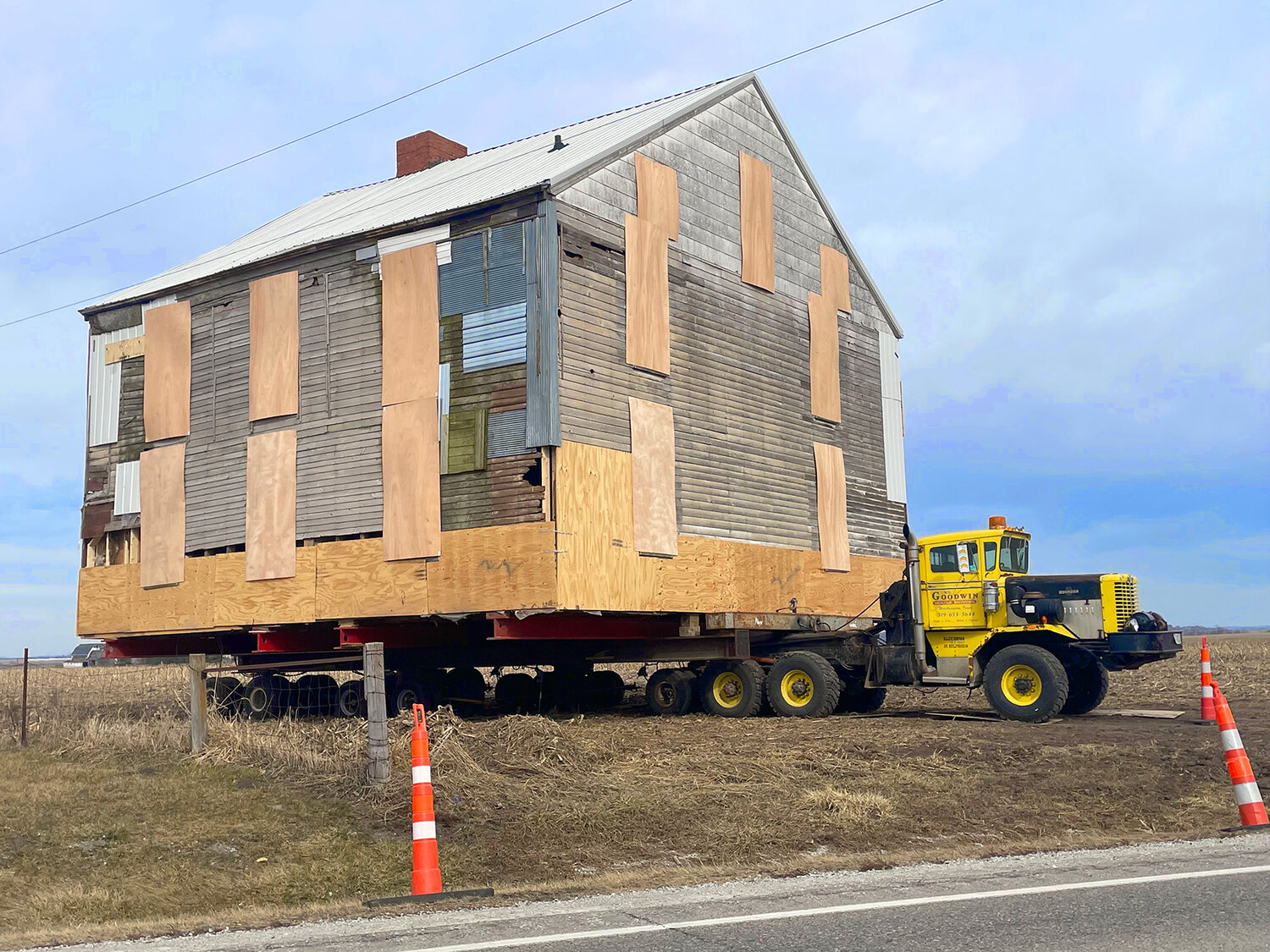The arrival and brief history of the Stagecoach Inn
It was a site to behold on Monday, Feb. 26, as the 110-ton Stagecoach Inn slowly made the three-mile trek to West Liberty, with helpers trotting alongside it.
“It was surreal to follow a house down the road in my truck,” said Clifford McFerren, Secretary for the West Liberty Heritage Foundation.
The 1840s structure traveled at walking speed from its original locations three miles west of town to the West Liberty Heritage Depot Museum and Park.
McFerren states the trip went flawlessly, though they did have to stop and wait for the train, which makes sense if you think about it.
The old stagecoach stop served travelers from far and wide for the 150 plus years of its existence, including those that may have arrived by train.
Now the Heritage Foundation is looking to restore it inside and out, adding it to their collection of historical pieces located in the park.
“No timelines for anything yet,” says McFerren, “We’ll work on it this summer, it won’t be finished but we hope to have it open by the end of summer so people can take a peek.”
Before the move, the Stagecoach Inn weighed around 140 tons, but 30 of those tons were removed in the form of brick nog.
As mentioned before, the building was originally located three miles west of West Liberty, where it was originally built in 1841. Its location made it popular place to stop.
The land was deeded from the government when John Tyler was president, planting the stagecoach on 160-acres of farmland.
C.J. Mackey came into possession in 1904, when her father Lemuel Wiggins gave it to her. She never lived in it, but always rented it out.
Mrs. Mackey was a direct descendant of the Nyce family, who built the first log cabin in our territory.
Being an inn back in its day, it housed many a newcomer and weary travelers in its three stories.
On the north side there is an open stairway, winding from the first to the third floor. The stair rails and casing are made of cherry wood.
In 1854 more than 25 men, women and children, spent the winter in this house just as it stands today, with the exception that what is now the garage was then used as a kitchen.
A large cupola with windows on its eight sides served as a lookout, and a place to hang lanterns, in the early day.
In recent years this was removed because it was attracting too many pigeons. Many initials covered its interior.
There remain four large fireplaces in the house, two in the first and two on the second.
Originally it was the only house around. However, this changed when the newcomers who wintered there in 1854 began building other homes nearby.
One was the Wiggens place, farther west. That same winter six deaths occurred at the inn.
Among the patrons of the inn was Egbert Smith, an eccentric man from Maine, who did business in gold and land.
He bought a large tract of land at $1.25 an acre, including many acres that lie directly west of the town. The John Stemm farm, formerly the Mrs. Elenora Nichols farm, was part of it.
Smith stayed about eleven years, but became discouraged because of slow progress, and sold his holdings for $2.50 an acre and went to California, taking all his money with him and buying California land.
It was dry there and he died land poor where he settled near Stockton, but when irrigation came his children and grandchildren reaped a fortune.
Under the siding of the old inn is brick more than halfway up. These bricks were burned about where the windmill stands on the Amos Whitacre farm, just west of the creek bridge on the highway west of town.
The clay there was the best to be found. The joists, rafters and framework were all hand hewn out of timber near the home, as was also the frame for the barn on the farm.
Work was done by an adz, a pioneer tool with a blade and a handle, some of which had a pick on one end.
The windows, doors and siding were purchased in Cincinnati, Ohio, and sent down the Ohio river and up the Mississippi to Muscatine, (then Bloomington) and across the country by oxen.
Mr. Smith sold his land to Jacob Butler and John Junkin. In 1886 Henry Felkner bought what is now the Mackey place. In 1891, Lemuel Wiggins bought the Felkner estate which extended west and gave this to his daughter.
Learn more here: iagenweb.org/muscatine/westlibertyhistory/oldtavern.htm
Comments




